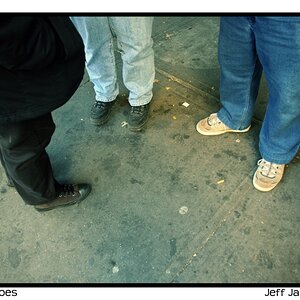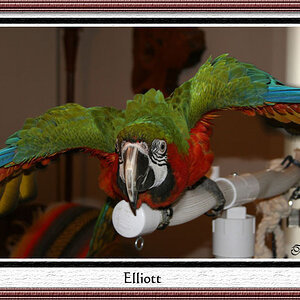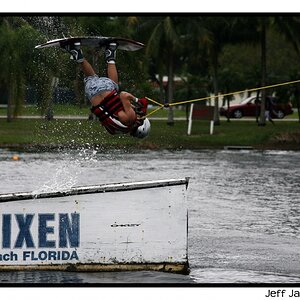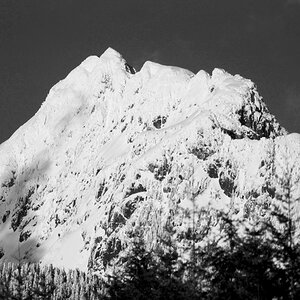skieur
TPF Noob!
- Joined
- May 14, 2007
- Messages
- 5,071
- Reaction score
- 204
- Location
- Canada
- Can others edit my Photos
- Photos OK to edit
Almost all pros and advanced amateurs postprocess their images as a basic part of the photographic process. They do it, not just to correct mistakes but to solve some of the inherent weaknesses in the tone, colour and contrast limitations of digital photography in some lighting situations.
Without a doubt Photoshop CS5 gives the photographer virtually total control over every aspect of digital imaging. To use this program successfully and to get your money's worth, there are two requirements.
The photographer needs to have an extreme visual sensitivity to what constitutes just the right amount and not too much postprocessing.
He/she also needs to be familiar with every function of every feature of the program to reach and not cross the line between the amount of postprocssing necessary and too much postprocessing.
These two requirements presuppose that the photographer has tons of expericnce in taking and evaluating photos, an artistic eye for colour and detail, as well as lots of practice using photoshop. That is certainly not the majority of photographers. Is it any wonder, therefore that Photoshop tends to be under-used or over-used/abused?
Then the time element or workflow comes into the picture, particularly for the pro as well as the bottom line question as to what postprocessing changes can really be seen as an improvement. Put another way, can fine-tuning tonal variations or colour be "too fine" or the changes too minor for most viewers to even notice?
One approach to saving time is to vary the amount of postprocessing with the nature of the project and the use of the photos. Product photography and magazine covers would require that you use everything you have in terms of postprocessing methods and plug-ins. Public relations photography or work for small-size print folders would require less work in post. Projected images might require major lighting or contrast changes but fewer changes in fine details which would not be highly visible on screen.
Software-wise, Photoshop, Paintshop Pro X3, and Nik and other plug-ins can all contribute to speeding up workflow in a variety of photographic projects. The photographer however needs to become comfortable using a variety of software and picking the right programs for the particular project.
skieur
Without a doubt Photoshop CS5 gives the photographer virtually total control over every aspect of digital imaging. To use this program successfully and to get your money's worth, there are two requirements.
The photographer needs to have an extreme visual sensitivity to what constitutes just the right amount and not too much postprocessing.
He/she also needs to be familiar with every function of every feature of the program to reach and not cross the line between the amount of postprocssing necessary and too much postprocessing.
These two requirements presuppose that the photographer has tons of expericnce in taking and evaluating photos, an artistic eye for colour and detail, as well as lots of practice using photoshop. That is certainly not the majority of photographers. Is it any wonder, therefore that Photoshop tends to be under-used or over-used/abused?
Then the time element or workflow comes into the picture, particularly for the pro as well as the bottom line question as to what postprocessing changes can really be seen as an improvement. Put another way, can fine-tuning tonal variations or colour be "too fine" or the changes too minor for most viewers to even notice?
One approach to saving time is to vary the amount of postprocessing with the nature of the project and the use of the photos. Product photography and magazine covers would require that you use everything you have in terms of postprocessing methods and plug-ins. Public relations photography or work for small-size print folders would require less work in post. Projected images might require major lighting or contrast changes but fewer changes in fine details which would not be highly visible on screen.
Software-wise, Photoshop, Paintshop Pro X3, and Nik and other plug-ins can all contribute to speeding up workflow in a variety of photographic projects. The photographer however needs to become comfortable using a variety of software and picking the right programs for the particular project.
skieur










![[No title]](/data/xfmg/thumbnail/32/32635-be18e952e67667cbb1525b4b057b6423.jpg?1619735554)


